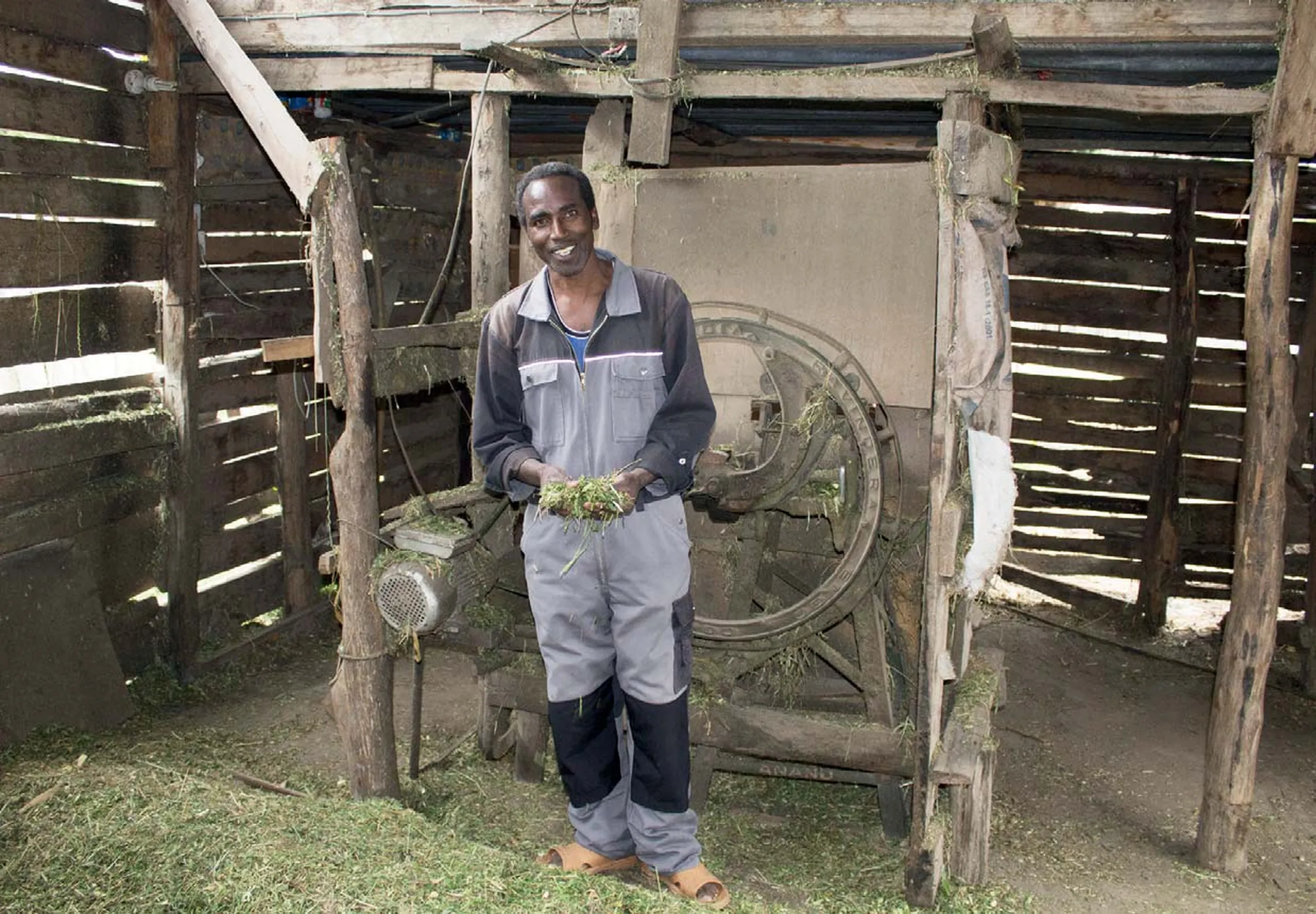A model dairy farmer leads the way

Mr Wilson Kanyoi is a member of Muki Dairy Farmers Cooperative Society and one of its leading farmers. Wilson lives in the town of Engineer, Nyandarua County, about 40 kilometres east of Naivasha. A few years ago, he started farming with two cows. Due to his participation in the Kenya Market-led Dairy Programme (KMDP) he has been able to expand and now has eleven cows.
Mr Wilson Kanyoi, aged 61, started dairy farming over a decade ago. During the first few years, his job in a hospital prevented him from engaging actively in this endeavour. This changed when Wilson retired five years ago. He did not want to depend on financial support from his children in order to sustain his wife and himself and decided to invest in his dairy farm to realize a new main source of income.
Wilson started with two local dairy cows that were producing just five litres of milk per day each. The cows grazed in an open field, but also fed on Napier grass, just like his neighbours’ cows. Wilson was eager to develop his dairy farm, but his lack of expertise hindered him from progressing. In 2013, he started to attend training sessions by the KMDP.

Mr. Wilson Konyoi with cut hay silage
During one of these training sessions, Wilson learned to grow lucerne as a source of protein for his cows. He had not learned however to deal with his biggest challenge: providing adequate feed for his cows during the dry season. The lack of feed was affecting his cows’ condition and milk production. He realised that he needed more up-to-date knowledge and skills in fodder production alongside other herd management skills.
‘Overall, I did not know how I could rear my cows in a way that they would benefit me. I only knew how to produce enough milk for household consumption […]. I had no idea about making silage and though my cows liked the fresh lucerne, growing it demanded a lot of management that resulted in high costs. Moreover, I still did not have sufficient feed for the cows during the dry periods.’
With the help of the KMDP extension officer, Wilson was able to improve his feeding practices and his herd management. He planted one acre of maize and two acres of Kikuyu grass to supplement the lucerne and Napier grass he was growing. He managed to grow enough feed to preserve almost twelve tonnes of maize silage. He also bought extra oat straw and constructed a hay shed.

Wilson Konyoi in a field of Lucerne that he uses to feed his cows.
Wilson now has eleven cows in total, four of which are lactating. They produce approximately 40 litres of milk per day. The cows have doubled their milk production compared to the year that Mr Kanyoi started dairy farming. Even during the dry season, between March and May, his cows do not show a significant drop in milk production. As a result of the increased production, Wilson's income has increased which has helped him to meet the needs of his family more effectively.
‘Overall, I feel more comfortable now, because my income and knowledge increased and my cows are far more comfortable than when I started. When consultants from SNV tell me my cows look well-fed, I feel proud. My farm is now seen as an example. The increased income has enabled me to pay school for my children. One of my children attends a private university; right now paying the fees is no longer a major challenge for me.’
This is a shortened version of a case study that can be found in our Dairy Matters publication.